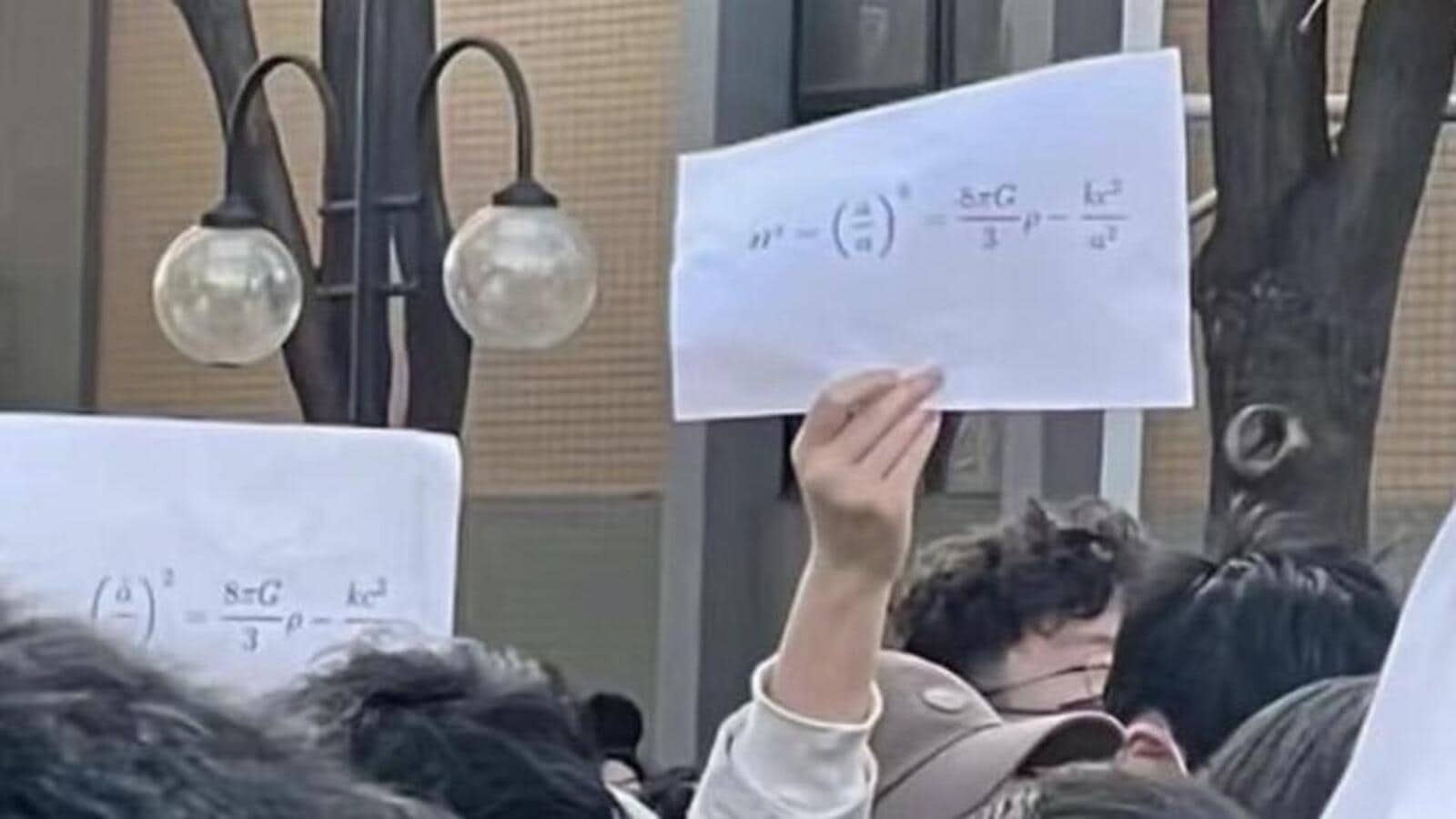The Friedmann equations, and the way in which they're related to protests in China | World Info
 The Friedmann equations, and the way in which they're related to protests in China | World Info
[ad_1]
The Friedmann equations, and the way in which they're related to protests in China | World Info
[ad_1]
NEW DELHI: Amongst the entire protests which have erupted all through China following the strict quarantine measures enforced by the federal authorities for Covid-19, one kind that has stood out is the present of a physics equation.
In footage broadly being circulated on social media, school college students of Beijing’s Tsinghua School could also be seen holding sheets on which is written one among many Friedmann equations.
What these equations ought to do with the subject of the protests is open to speculation. Many on social media have instructed that it’s a play on the phrases “free man”. One different view is that it symbolises a free and “open” China, on account of the Friedmann equations describe an “open” (rising) universe.
What are the Friedmann equations
Named after the Russian physicist Alexander Friedmann, these are a set of equations that describe the velocity at which the universe expands. In reality, Friedmann was the first physicist to predict that the universe is rising.
The equation displayed throughout the protests in China is one kind of the first Friedmann equation.
Merely put, the first Friedmann equation tells us the velocity at which the universe is rising. This, in flip, permits scientists to predict what the universe will seem like at any degree ultimately, or work out what it appeared like at any degree before now.
How the equations bought right here to be
Sooner than going into what the variables throughout the equation suggest, it's good to understand the context throughout which these equations bought right here.
Friedmann proposed this equation in 1922, having derived it from Albert Einstein’s 1915 Precept of Regular Relativity, nonetheless by reimagining the universe from one of the best ways Einstein observed it.
Moreover Study: China sees unprecedented protests in direction of Covid curbs as circumstances rise
The Regular Precept describes the thought of “spacetime” and relates it with what everyone knows as gravity. Einstein proposed that objects throughout the universe change the curvature of spacetime, and described a relationship amongst variables along with mass, spacetime, energy and gravity. However when the hypothesis wanted to work in a static universe, it wished a “restore”, which Einstein launched inside the kind of a bodily quantity he often known as the “cosmological mounted”.
That's the place Friedmann differed. Whereas he used the Regular Precept itself, he proposed that the universe is homogeneous, isotropic (no mounted centre) and by no means static; it expands or contracts with time. From these assumptions emerged his equations.
The H throughout the equation is the expansion charge, typically referred to as the Hubble mounted. The other variables describe parts such as a result of the gravitational mounted, density and the rate of sunshine.
Why it points
Whereas Regular Relativity was worthwhile on many counts, along with a reconfirmation of Newton’s gravity and a prediction of the bending of starlight, its “solely draw back”, in response to the American astrophysicist and creator Ethan Siegel, was the cosmological mounted that Einstein launched as an “advert hoc” restore. In another case, the assumption of static spacetimes would have triggered the universe to interrupt down in on itself, Siegel outlined in an article in Forbes journal in 2018.
Then once more, Seigel wrote, the Friedmann equations “inform you that the universe isn’t static, nonetheless barely that it each expands or contracts counting on what the expansion charge and the contents of your universe are. Higher of all, they inform you the way the universe evolves with time, arbitrarily far into the long run or earlier”.
By the way in which, Einstein initially dismissed Friedmann’s equations as nothing higher than a mathematical “curiosity”, in response to a paper on the internet website of the School of North Carolina, Wilmington.
Supply by [author_name]







0 comments: